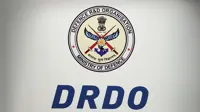IATA forecasts passenger traffic to reach 2.75 billion by 2011
26 Oct 2007
.
IATA traffic forecasts are based on a comprehensive survey of airline expectations for major route areas.All figures are provisional and represent total reporting at time of publication plus estimates for missing data.
International passenger demand is expected to rise from 760 million passengers in 2006 to 980 million in 2011 at an annual average growth rate (AAGR) of 5.1 per cent. This will be lower than the 7.4 per cent AAGR recorded during 2002-2006, largely due to slightly slower global economic growth.
Domestic passenger demand is expected grow from 1.37 billion passengers in 2006 to 1.77 billion in 2011, an AAGR of 5.3 per cent, fuelled by expansion in the Indian and Chinese domestic markets.
International freight volumes are expected to grow at an AAGR of 4.8 per cent over the forecast period, supported by economic growth, globalisation and trade. Strong price competition from other modes of transport is expected to keep freight demand growth below the 6.2 per cent AAGR recorded for 2002-2006.
"The numbers clearly show that the world wants to fly, said Giovanni Bisignani, IATA's director general and CEO. "And it also needs to fly. Air transport is critical to the fabric of the global economy, playing a critical role in wealth generation and poverty reduction. The livelihoods of 32 million people are tied to aviation, accounting for $3.5 trillion in economic activity."
"A looming infrastructure crisis could put these benefits at risk. And failure to prepare adequately to meet demand will have an environmental cost with inefficient use of airspace and delays. There is no panacea, but the starting point for a sustainable solution is a common vision for efficiency that is acted on by governments and industry. With infrastructure planning timelines measured in decades, there is no time to lose."
Bisignani added, "Parts of the world are effectively managing infrastructure development to anticipate and meet demand-particularly the Middle East and China. But the enormous anticipated expansion in India that has fuelled record aircraft orders could be cut short by insufficient airport and air traffic management capacity.
"The unprecedented delays nightmare in the US is a clear example of the paralysis that results when we miss the mark on effective planning. This is mirrored in Europe where governments still have not cleaned up the mess in air traffic management with an effective Single European Sky.
"In total, infrastructure inefficiency-from bottlenecks to inefficient processes-adds 12 per cent to our fuel bill and costs the environment 73 million tonnes of unnecessary CO2 emissions each year," said Bisignani.
IATA has a clear four pillar strategy to take aviation to carbon neutral growth in the medium term, based on investment in technology, more effective operations, efficient infrastructure and appropriate economic measures. "The growing demand for aviation is an opportunity for sound investment in a green future," said Bisignani.
Bisignani announced the forecast in a speech to the Arab Air Carriers Organization (AACO) in Damascus.
Regional forecasts:
Middle East: The strongest international passenger demand growth is forecast for the Middle East where an AAGR of 6.8 per cent will be driven by GDP expansion along with significant new routes and capacity.
Within the region, UAE (8.4 per cent) will show the strongest growth. Total international passenger numbers are forecast to be around 105 million in 2011, an increase of 30 million over 2006 levels.
Asia: Strong growth in Asia Pacific (5.9 per cent AAGR) will be driven by strong economic growth in the major developing economies in the region. China (8.8 per cent AAGR), India (8.6 per cent AAGR) and Vietnam (7.7 per cent AGGR) will lead the region. Total international passenger numbers will rise by 87 million by 2011.
Africa: Above average demand growth in Africa (5.6 per cent AAGR) reflects stronger economic ties between the region and markets in the Middle East and Asia. Total international passenger numbers will rise by 18 million by 2011.
Europe: European international passenger demand is expected to increase with an AAGR of 5.0 per cent over the period translating into 150 million more international passengers by 2011. While the growth rate is slower than the global average, Eastern Europe will see a more rapid average annual expansion with Latvia (12.1 per cent), Poland (9.2 per cent), Ukraine (8.8 per cent), Serbia (7.6 per cent) and Romania (7.3 per cent) being the top growth markets.
Latin America: Relatively low growth in Latin America (4.4 per cent AAGR) reflects slower demand growth in key North American markets and within the region. International passenger totals will rise from 96 million in 2006 to 119 million in 2011.
North America: North America is expected to be the slowest growing region at 4.2 per cent, reflecting the mature nature of markets in the region and an expected slowdown in US economic growth. International passenger traffic will increase by 41 million by 2011.
International Freight Demand: Asia Pacific is expected to lead freight growth with an AAGR of 5.4 per cent over the period. Seven of the top ten freight markets fall within the region: China (10.8 per cent), India (8.3 per cent), Republic of Korea (8.2 per cent), Vietnam (7.5 per cent), Sri Lanka (6.8 per cent), Pakistan (6.7 per cent) and Malaysia (6.2 per cent). The Middle East will see the second highest growth at 5.0 per cent. The fastest growing Middle Eastern markets are expected to be Qatar (6.9 per cent) and Saudi Arabia (6.2 per cent).
Freight to/from and within Asia Pacific will account for 57 per cent of the 36 million tonnes of international air freight volume in 2011, up from 55 per cent in 2006. As most volume will be outbound from Asia, there are concerns about the impact of imbalances in global trade patterns on the industry.
IATA represents some 240 airlines comprising 94 per cent of scheduled international air traffic.


.webp)

.webp)



















